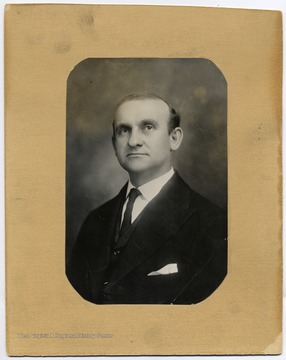

By William “Skip” Deegans
Shown above is an undated photo of Greenbrier County’s Issac Thomas Mann who, in short order, became one of West Virginia’s most successful entrepreneurs. Born in 1863 and the son of Mathew and Elizabeth Mann, he was raised on a farm in the Fort Spring area. He became a teller at the Greenbrier Bank in Alderson and went on to organize a bank in Bramwell, West Virginia. He reached Mercer County at a time when the Guyandotte River coal field was developing. In addition to the Bramwell bank, he controlled several regional banks, and by 1902 was a director of the Bank of Richmond (Virginia). He built a commodious home in Bramwell and organized the building of the Bramwell Presbyterian Church (both are still standing and can be seen on the Bramwell walking tour).
Mann became president of the Pocahontas Fuel Company and opened a coal mine and camp in 1916 near the mouth of Barkers Creek that he named Itmann. The Itman company store and offices were designed by the Bluefield architect Alexander Mahood. The building still stands and exemplifies the exceptional coal field stonework by Italian masons. Mann started a shipping company, and in 1917 he commissioned construction of the Issac T. Mann cargo ship that transported coal from Norfolk to New England.
Mann was a major player in West Virginia Republican politics. In 1908 and 1916 he was a delegate to the Republican National Convention, led William Howard Taft’s presidential campaign in West Virginia, and made an unsuccessful run for the U.S. Senate in 1912.
In the mid 1920s, Mann began investing heavily in Chicago real estate. Before the stock market crash in 1929 his property holdings were valued at $86 to $100 million ($1.5 to $1.7 billion in today’s dollars). Evidently, Mann lost most of his fortune in the crash. In addition to his home in Bramwell, Mann and his family had a home in Washington, DC, where he died in 1932.
Photo: Courtesy of the West Virginia University Regional History Center.
Sources: “Bramwell – The Diary of a Millionaire Coal Town,” The Washington Post, The Boston Globe, Hinton Independent Herald.



